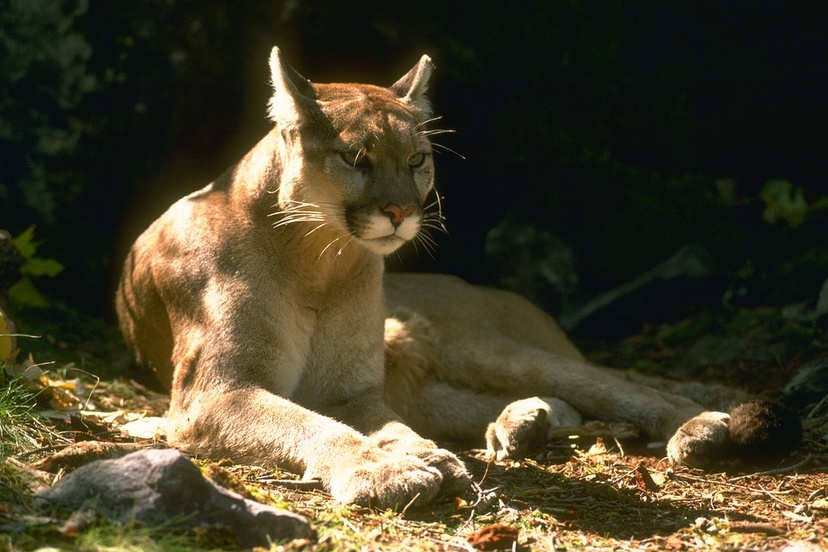By Samantha Miller
Andrew Carpenter, writing in the Pagosa Springs SUN newspaper (“Hunting is a valuable tool in managing lions”) says Coloradans aren’t smart enough to have an opinion about recreational killing of mountain lions or bobcats in nature.
It’s too “complicated,” he says, too “highly technical” for mere citizens. Leave it to the big boys, those state government agency biologists and game wardens.
Actually, it’s not at all complicated. Coloradans are smart and deserve a voice, because our wildlife is not private property, and deserve better, as do future generations.
Cats Aren’t Trophies (CATs) is a citizen-led effort to ban trophy hunting of mountain lions and fur-trapping of bobcats. Volunteers are now collecting signatures to secure a place on the November ballot. Learn how you can help at www.catsarenttrophies.org
It may surprise Mr. Carpenter to hear that decades ago voters similarly banned the baiting and hunting of bears using dogs in spring when moms have dependent cubs, and one of the loudest supporting voices was Tom Beck, our Colorado Division of Wildlife’s bear biologist.
The agency has stated its neutrality on the Cats Aren’t Trophies (CATs) Measure, noting on its website that its job is to carry out the will of the citizens on these exact issues. CATs supports CPW.
Lion Hunting in Colorado is Very Unsporting
Mr. Carpenter admits his dislike for Coloradans exercising democratic freedoms, but that doesn’t give him an excuse to confuse the voters. Or maybe that is the goal.
He does this by failing to point out that the CATs measure bans the recreational trophy hunting of lions to keep heads and hides, which has nothing to do with modern science-based wildlife management for the benefit of lions as they are key to ecosystem health for future generations.
Colorado’s statute is quite clear, mountain lion hunting is a “wildlife-related recreational opportunity” and nothing else.
Mr. Carpenter tells us to respect biology yet fails to provide any biology to support his litany of excuses to sport kill lions, including: “biology requires some predators to be hunted” and lion sport hunting “prevents overpopulation of lions” plus “overhunting of prey species.”
There’s good reason for this key failure to cite evidence: there isn’t any.
There is, however, a half-century of peer-reviewed, published science by leading biologists and population ecologists to show us that recreational killing of lions is not managing anything besides sport hunting for a minority view of fun times.
Leading lion ecologists from across the West have tested a series of hypotheses to evaluate benefits to humans from increased lion-killing. From 1971 through 2023, research has been designed to kill predators to test artificially drawing down lion populations, as well as to test giving us more deer and elk for our freezers, or to test protecting our dogs and our livestock from predation (read the peer-reviewed and published studies, with citations, on the Science page at www.catsarenttrophies.org).
The conclusions are consistent: Killing has never, ever worked. (In fact, studies show recreational hunting mountain lions increases risk to domestic animals.)
Colorado Parks and Wildlife reports that after killing half the population of mountain lions in Colorado’s Arkansas Valley, the slaughter had no remarkable effect on deer populations. Researchers for the Hornocker Wildlife Research Institute found that after increased killing of lions to lower their number, populations rebounded back to nature’s normal without human interference and without overpopulation.
“Our research (10 years) in New Mexico indicates that mountain lion populations will stabilize at a level depending on available habitat and food resources,” the experts concluded in their exhaustive study.
There is no overpopulation in California, where lions have not been sport hunted for 50 years.
“Anyone familiar with population ecology knows that killing lions for sport is a social decision, based on attitudes and what is considered acceptable as recreation,” explains Rick Hopkins, a lion population ecologist of 45 years in the field.
Killing for Fun is a Losing Argument, and Trophy Hunters Know it
Last season, that ended in March, lion hunters killed 500 lions (265 males, 235 females) in the name of sport. These were native wildlife existing as nature prescribes, not in conflict with humans.
But you will never hear from Mr. Carpenter and trophy hunters like him about the actual details, including that outfitters charge up to $8,000 and “guarantee” a kill. Packs of dogs wearing GPS collars chase and corner sentient mountain lions up a tree. The shooter then walks up to a tree, where the lion has no escape, takes aim, and shoots.
This is shooting, not hunting, and disregards ethical hunting principles of “fair chase” in the North American Model of Wildlife Conservation
Sometimes lions are pushed out onto cliffs and fall; there is ample video online showing dogs in bloody battles with lions. It is undeniable kittens are orphaned when you have nearly half of lions killed are females and CPW says mothers will leave kittens alone up to 12 days to go find food.
Mr. Carpenter does not want you to hear these realities on the ground (or in the trees) because it’s all a losing argument for him. So he must rely on false statements, hoping that journalists won’t fact check or ask about ethics. It’s a well-oiled misinformation campaign that could certainly benefit from a reality check by good journalists today.
Samantha Miller lives in Colorado and is Campaign Manager for Cats Aren’t Trophies (CATs), which is a citizen-led effort to ban trophy hunting of mountain lions and fur-trapping of bobcats.

